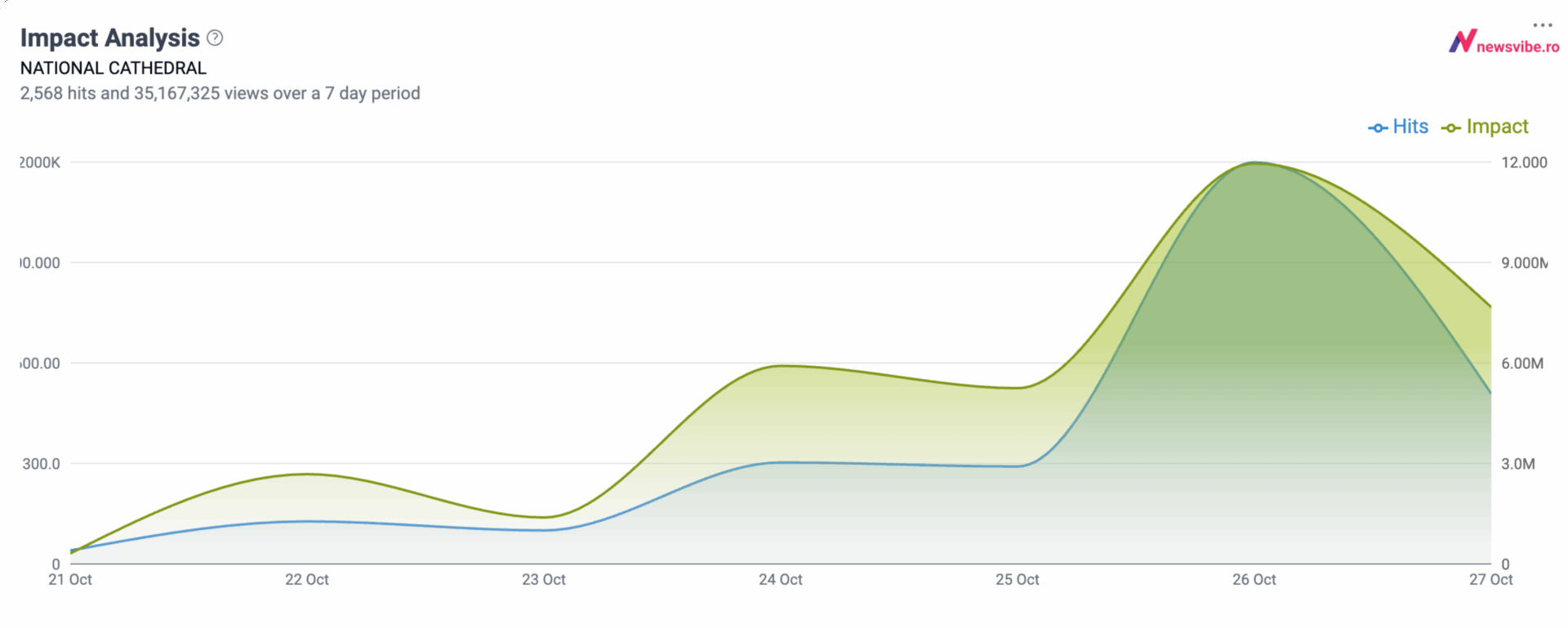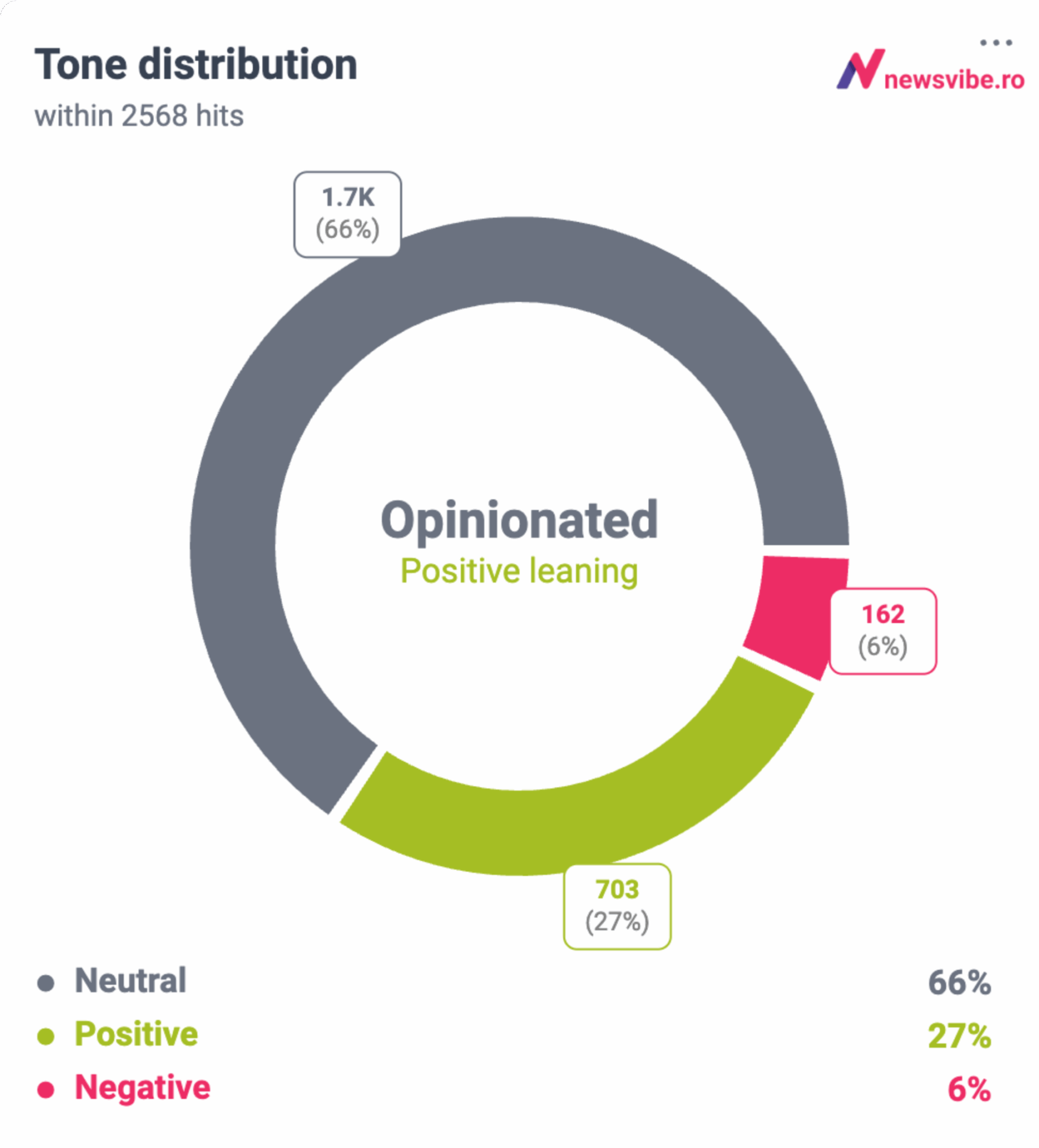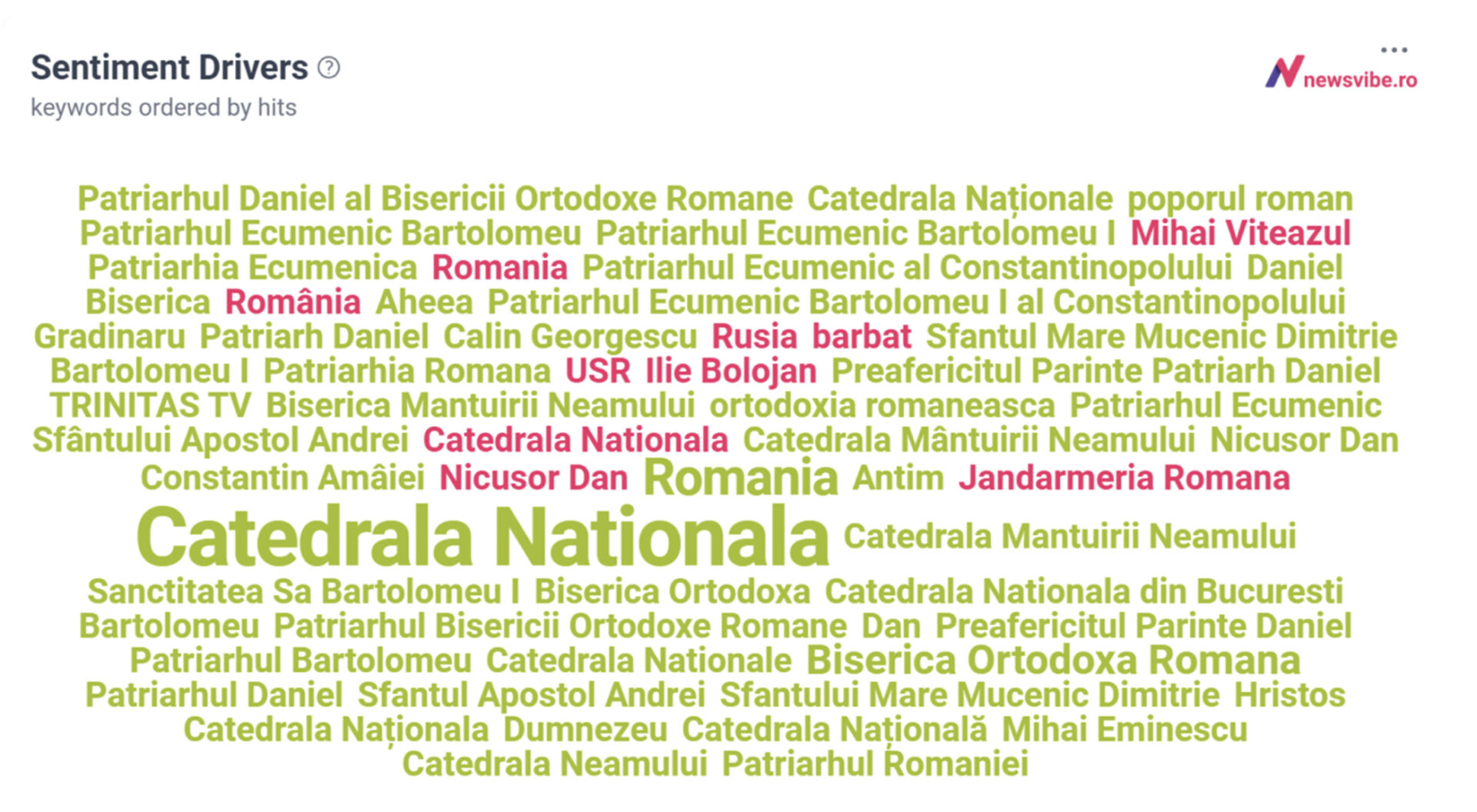The recent consecration of the paintings at Romania’s new National Cathedral was not just a landmark religious event; it was a massive media phenomenon. This extended analysis, based on data originally featured on informat.ro, uses the NewsVibe platform to look beyond the surface numbers, deconstruct the online conversation and pinpoint the precise drivers of public sentiment.
What happens when a moment of national and religious significance collides with the reality of modern politics? The data reveals a story of two very different conversations happening at the same time.
The scale: mapping a 35 million viewership spike
In the week surrounding the event, NewsVibe tracked over 2,500 relevant online mentions about the cathedral, generating an estimated impact of over 35 million views in the maximum visibility period (Oct 21 – 27).
Our Impact Analysis chart shows a clear narrative:
-
The Build-up:
The conversation began gaining momentum days earlier, driven by related news like the arrival of Ecumenical Patriarch Bartholomew of Constantinople and the confirmed attendance of political leaders, including Moldovan President Maia Sandu. -
The Peak:
Mentions and impact exploded on October 26th, the day of the consecration ceremony, accounting for more than half of the entire week’s volume.
This data confirms the event’s massive reach. But who was driving the conversation, and what were they really talking about?

Who talked about what? Deconstructing the conversation with network analysis
The resulting map instantly visualizes that this was not one single conversation, but several distinct clusters:
-
The Green Cluster (The Core): The largest cluster was centered on “National Cathedral,” “Romania,” and “Bucharest.” This was the primary informational conversation – media outlets and users discussing the event itself
-
The Blue Cluster (The Politics): A separate, significant cluster formed around political figures “Maia Sandu” (President of Moldova), “Nicușor Dan” (Romanian President) and “Ilie Bolojan” (Romanian PM), reflecting the media focus on their high-profile attendance.
-
The Red/Purple Clusters (The Hierarchy): Two distinct clusters emerged around the religious leadership, one focused on “Patriarch Daniel” and the Romanian Orthodox Church, and another on the Ecumenical Patriarchate of Constantinople and “Patriarch Bartholomew I”
-
The Teal Cluster (The Institution): A smaller, connected cluster focused specifically on the “Romanian Patriarchate” and its activities.
This analysis shows that “the conversation” was actually a mix of general news, political commentary and institutional religious coverage, all happening in parallel.

The great divide: how politics drove 100% of the negativity
The most powerful insight comes from analyzing the tone. At first glance, the “Tone Distribution” chart shows an overwhelmingly neutral and positive discussion. With 66% of mentions being Neutral and 27% Positive, only a small fraction (6%) were Negative.
This data suggests a massive PR success. But it begs the question: where did that 6% of negativity come from?

This is where NewsVibe’s “Sentiment Drivers” feature becomes essential. Instead of just giving a general score, it analyzes sentiment at the entity level, identifying which specific keywords are driving the positive and negative tones.
-
Positive Drivers (Green): The entities related to the event and faith were overwhelmingly positive. Keywords like “National Cathedral”, “Patriarch Daniel,” and “Patriarch Bartholomew I” appeared predominantly in favorable contexts.
-
Negative Drivers (Red): The negativity was almost exclusively linked to political and geopolitical names. Keywords like “Nicușor Dan,” “Ilie Bolojan,” “USR” (Romanian party) and “Russia” appeared in negative contexts.
The “why” is clear: this dynamic was directly tied to the booing incident directed at the politicians present at the event, which some media sources alleged were politically stimulated.

From data to decision. Details matter!
This case study is a perfect demonstration of why granular, entity-level sentiment analysis is critical.
A basic sentiment report would have simply blended the 6% negativity with the 94% positive/neutral, diluting the data. It might have concluded that the negative sentiment is negligible.
Our analysis proves the opposite:
-
The religious event itself was a near-total success in terms of online sentiment.
-
The negative coverage was entirely associated with the political component of the event.
For any brand, institution, or public figure, understanding this distinction is the key to strategic communication. It allows you to see exactly where a problem lies – or to prove that a perceived problem isn’t actually about you. By separating the event sentiment from the entity sentiment, you move from basic monitoring to actionable media intelligence.
